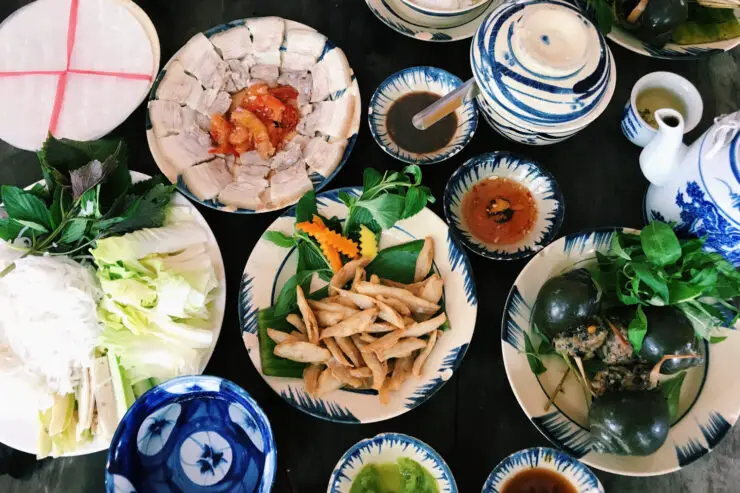As an Amazon Associate I earn from qualifying purchases. Please read the disclaimer for more info.
When most people think of traditional Vietnamese food, they think of recognisable dishes such as pho and banh mi. But the flavors of Vietnam run much deeper.
When it comes to food, Vietnam is a hidden gem. From the bustling streets of Hanoi to the Mekong Delta, Vietnam is a country with a rich culture and cuisine that is beloved by both locals and travelers alike.
In this article, we’ll take a closer look at what flavors make up Vietnamese food and some of the most popular dishes in Vietnam, and what makes them so special.
Table of Contents
- Flavors of Vietnam
- An Overview of Vietnamese Food
- Flavors of Vietnam: Traditional Vietnamese Dishes
- Conclusion to The Flavors of Vietnam: Traditional Vietnamese Food
Flavors of Vietnam
Vietnamese cuisine is fresh, vibrant, and full of flavor. The key flavors of Vietnamese cuisine include fresh herbs, garlic, lemongrass, fish sauce, and chili peppers. These flavors combine to create a fresh, light, and healthy cuisine that is perfect for the warm climate of Vietnam.
Fish Sauce
In Vietnam, fish sauce is known as nước mắm and it is an essential ingredient in many dishes. It is made by fermenting fish and salt in barrels for several months and then straining it. Fish sauce has a strong salty flavor and is used as a seasoning or condiment. It is also used to add umami flavor to food.
Nuoc Cham
Nước chấm is a traditional Vietnamese dipping sauce that is often used to accompany grilled meats or spring rolls.
The sauce is made from a variety of ingredients, including fish sauce, sugar, lime juice, garlic, and chili peppers. Nuoc Cham is typically sweet and sour with a slightly salty flavor, and the addition of chili peppers gives the sauce a bit of heat.
In Vietnam, Nuoc Cham is often served as a table condiment, allowing diners to adjust the level of spice to their taste. The sauce can also be used as a marinade or dressing, adding flavor and depth to a variety of dishes.
Fresh Herbs
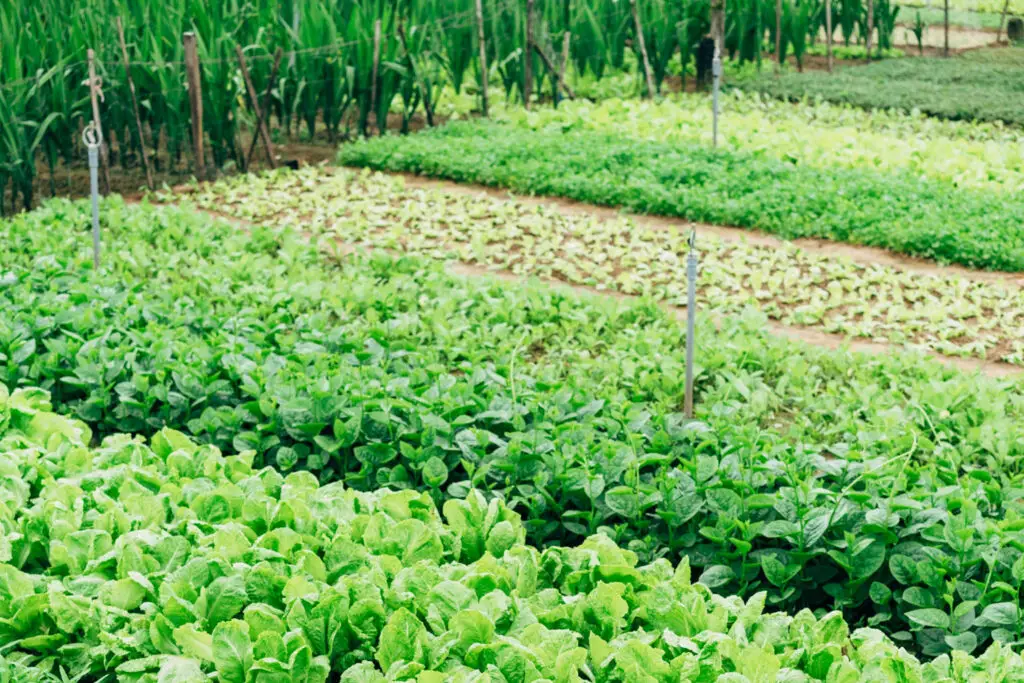
Vietnamese cuisine features a wide variety of herbs, many of which are commonly used in other Asian cuisines as well. Common herbs include cilantro, mint, Thai basil, bean sprouts, and lemongrass.
These herbs are often used to add flavor to soups and stir-fries, and they can also be used as garnishes.
In addition to these common herbs, Vietnamese cuisine also makes use of rarer herbs such as culantro (sawtooth herb), rice paddy herbs, pandan leaves, and perilla leaves. These less common herbs often have more distinct flavors, and they are usually used sparingly in order to avoid overwhelming the other flavors in a dish.
As a result, they can add a unique depth of flavor to Vietnamese cuisine.
An Overview of Vietnamese Food
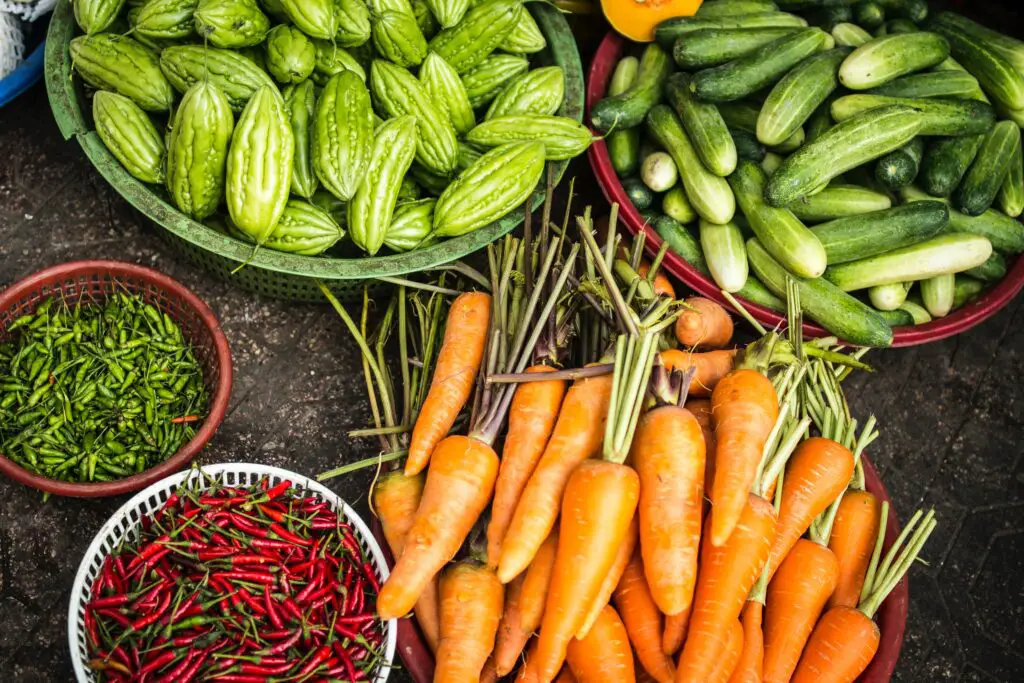
Vietnamese cuisine is often lauded for its use of fresh ingredients, bold flavors, and healthy cooking methods.
Vietnam is located in Southeast Asia and its culinary traditions have been influenced by the country’s history and neighboring cultures, such as Cambodian and Chinese cuisine.
Common ingredients in Vietnamese dishes include rice, noodles, and proteins such as pork, beef, chicken, and seafood.
The use of fresh herbs, vegetables, and fruits is common in Vietnamese cooking, as is the use of fish sauce, soy sauce, and fermented shrimp paste.
In addition to being flavorful, Vietnamese food is also generally healthy, with traditional cooking methods such as steaming and stir-frying helping preserve the nutrients of the food.
Flavors of Vietnam: Traditional Vietnamese Dishes
Pho
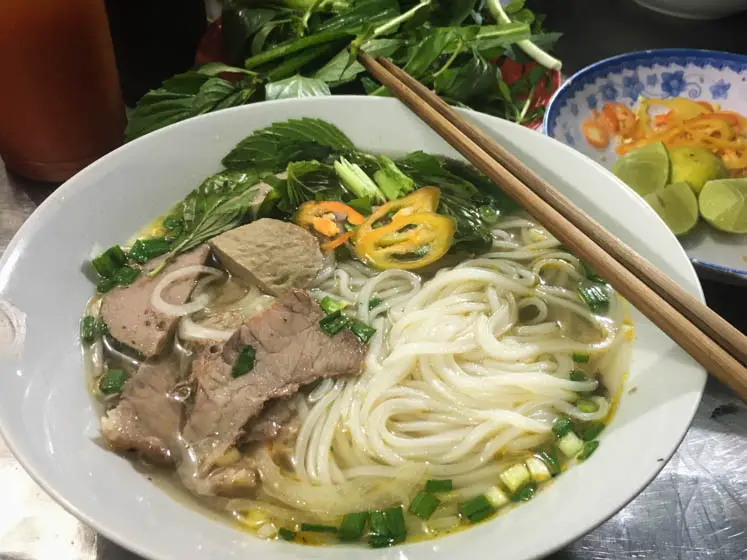
Pho is a soup made with rice noodles, fresh herbs, and either beef or chicken. The broth is flavored with star anise, cloves, ginger, and cinnamon. This dish is typically served with a side of bean sprouts, lime wedges, chilli peppers, and additional herbs such as sawtooth herb, Thai basil, and Vietnamese coriander (cilantro).
Pho is widely considered to be Vietnam’s national dish and can be found throughout the country, from street carts to five-star restaurants.
Com Tam – Vietnamese Broken Rice
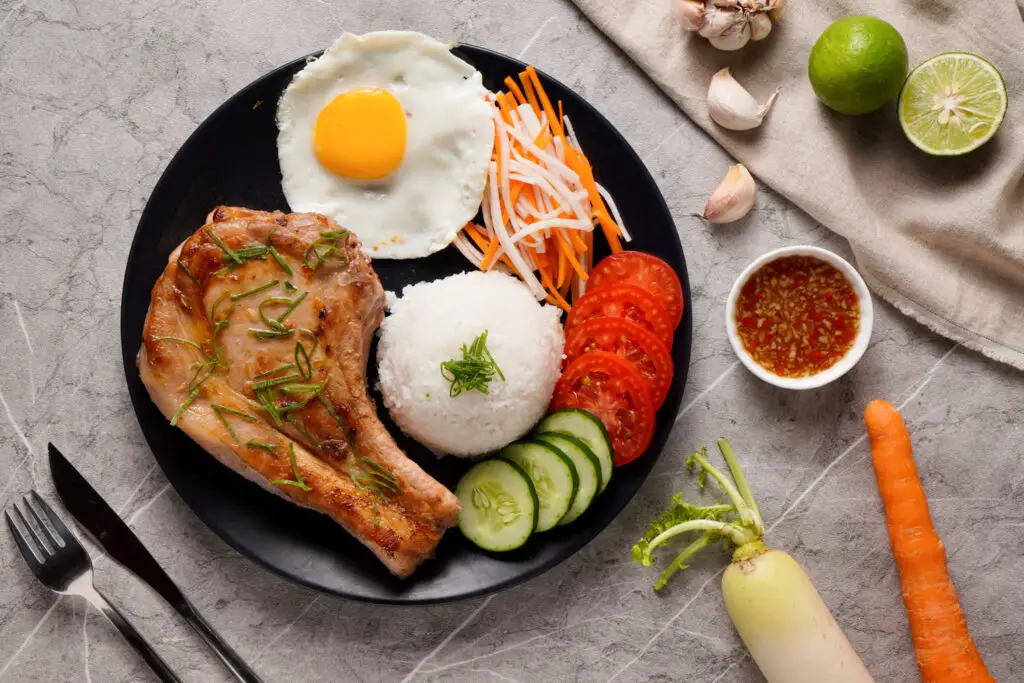
Com Tam is traditionally a local food of southern Vietnam, especially Ho Chi Minh City, and is generally made with a grilled pork chop, broken rice, sliced tomato and cucumber, and pickled vegetables.
To make it an even more filling dish, other additions can include steamed egg meatloaf, shredded pork skin, and a fried egg.
Com Tam is served with the famous Vietnamese dipping sauce, nuoc mam.
Banh Mi
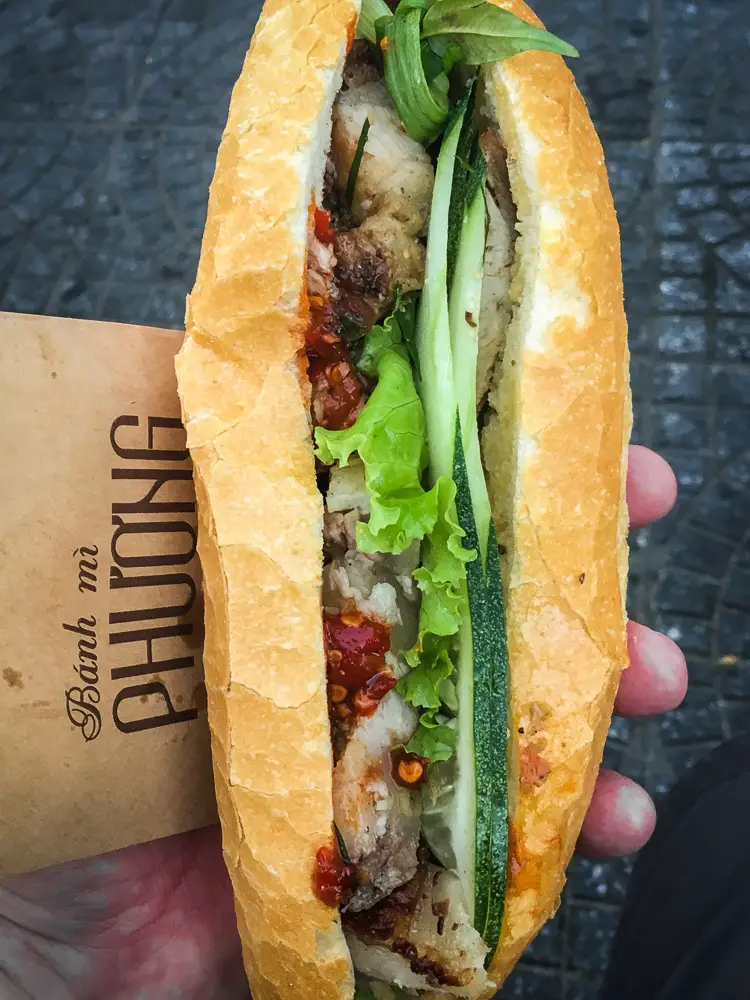
Banh mi is popular street food in Vietnam that has its roots in French colonial cuisine.
Banh mi sandwiches are made with a crusty baguette and are traditionally filled with pork, pate, pickled vegetables, mayonnaise, green onion, cilantro, and chillies.
There are many ingredient variations of the Banh mi, with fillings including fish, pork meatballs, and fried eggs.
Goi Cuon
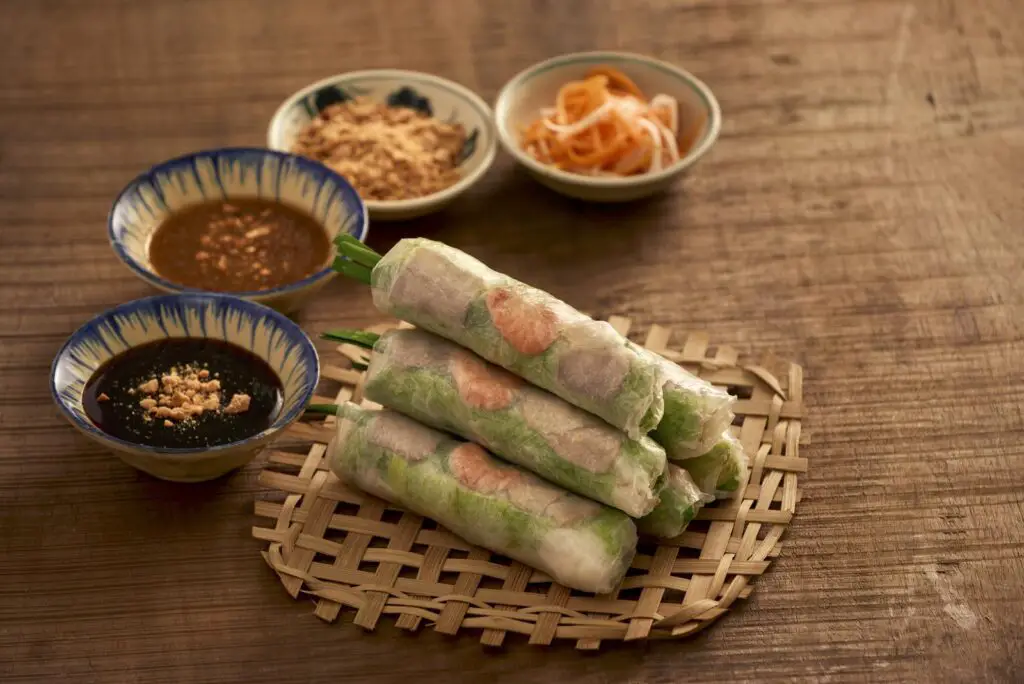
Goi cuon , also called Vietnamese summer rolls, are typically made with pork, shrimp, rice noodles, and fresh herbs wrapped in rice paper.
These light and refreshing spring rolls are usually served with a dipping sauce made from hoisin sauce (a sweet and savory sauce made from soybeans), chili pepper flakes, and lime juice.
Bun Cha
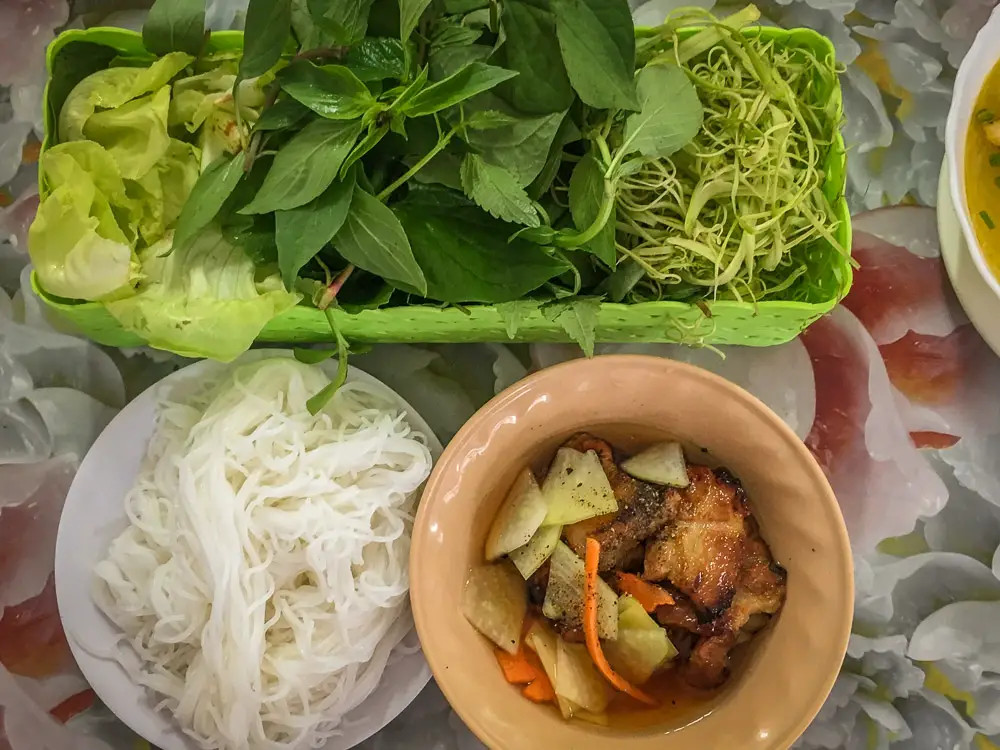
Bun cha is a humble dish that originates from Hanoi. It’s made with grilled pork, vermicelli noodles, and a dipping sauce made from fish sauce, sugar, lime juice, and garlic.
Bun cha is usually served with a side of fresh greens like lettuce or cucumber.
Nem Nuong
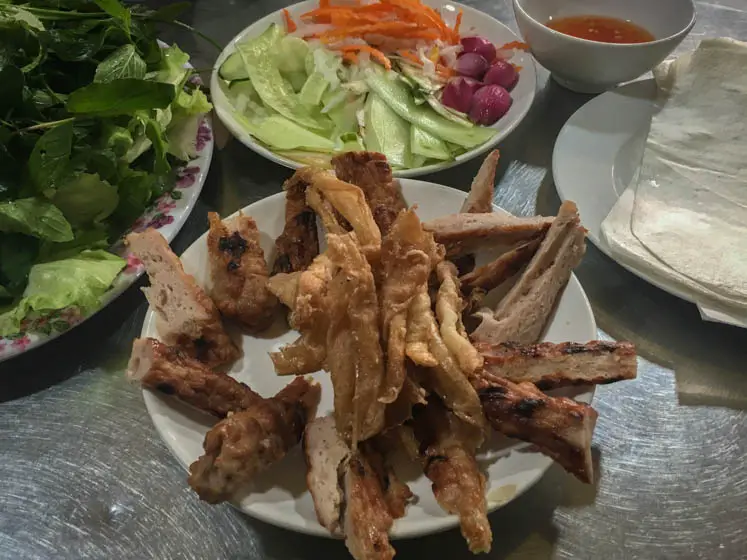
Nem nuong cuon consists of grilled pork sausage, cucumber, and mint leaves wrapped in rice paper wrappers. The spring rolls are usually served with a dipping sauce such as hoisin or peanut sauce
Cha Ca La Vong
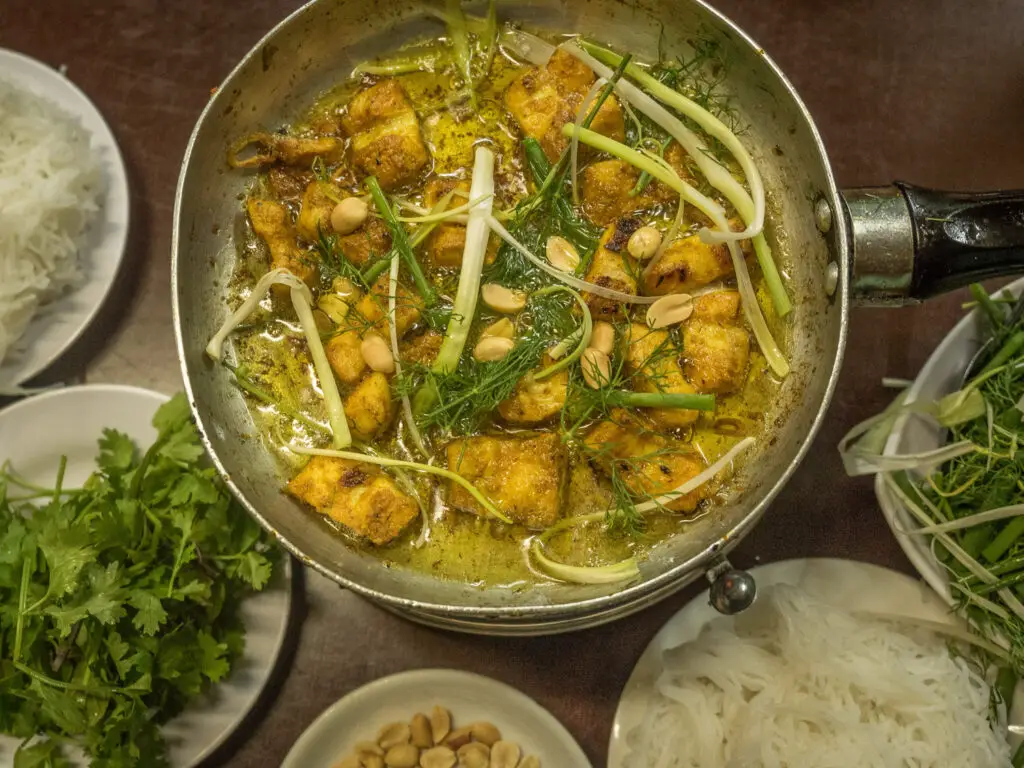
Cha ca la vong is a Vietnamese noodle dish that is made with grilled fish, vermicelli noodles, and dill.
The dish is often served with a side of fresh greens and peanuts.
Cao Lau
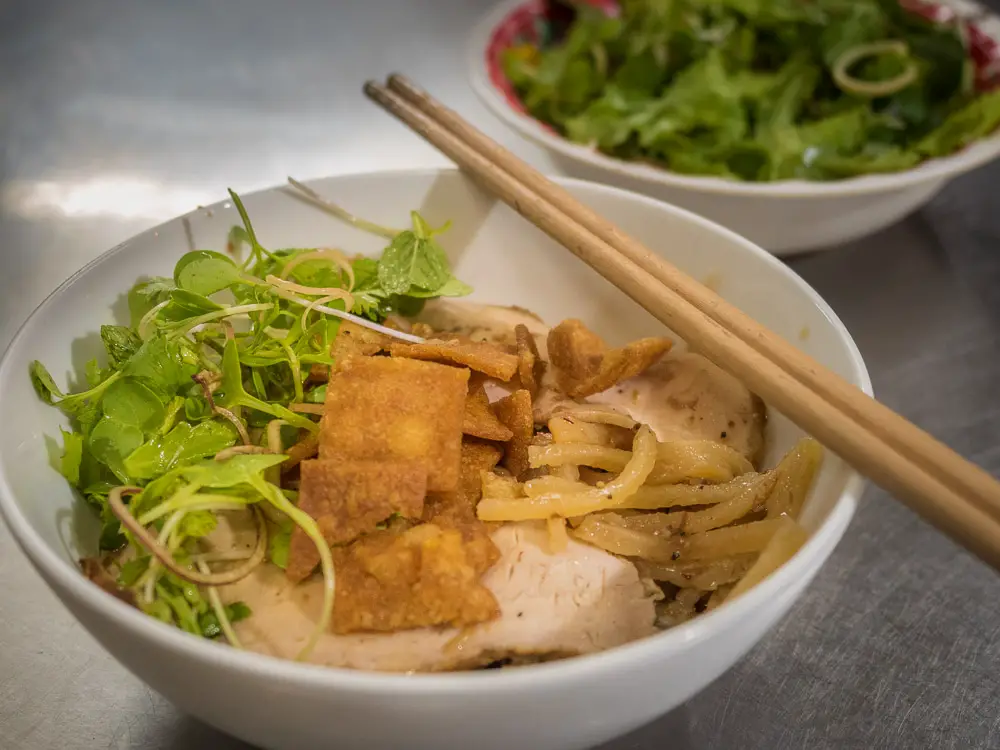
Cau Lau is a dish that originates from Hoi An, a city in central Vietnam. The dish is made with the unique cau lau noodles, pork, vegetables, green onions, and a small amount of broth.
The dish is often served with a side of fresh lime and chili peppers.
Mi Quang
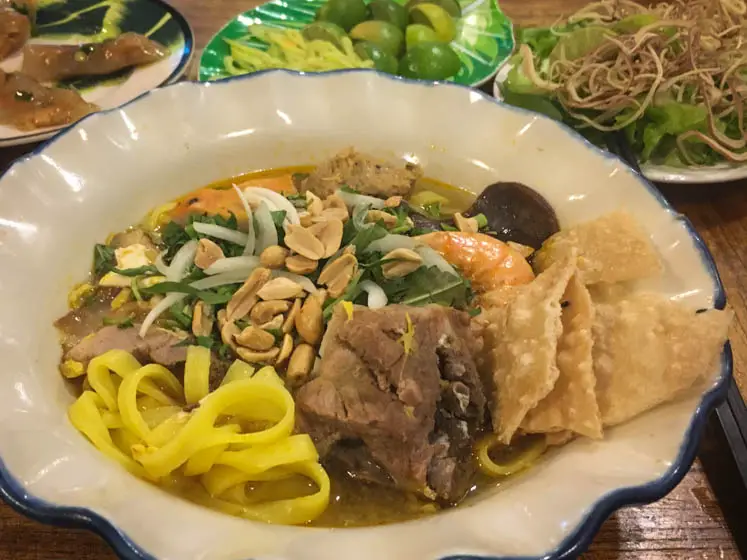
Mi Quang is a popular Vietnamese dish that typically features rice noodles, protein (usually pork, shrimp, or both), and vegetables.
The dish is often garnished with peanuts, cilantro, and lime, and it can be served with either a broth or a dry sauce.
Mi Quang is one of the regional flavors of Vietnam, as it originated in the central Vietnamese regions of Vietnam, Quang Nam.
Banh Xeo
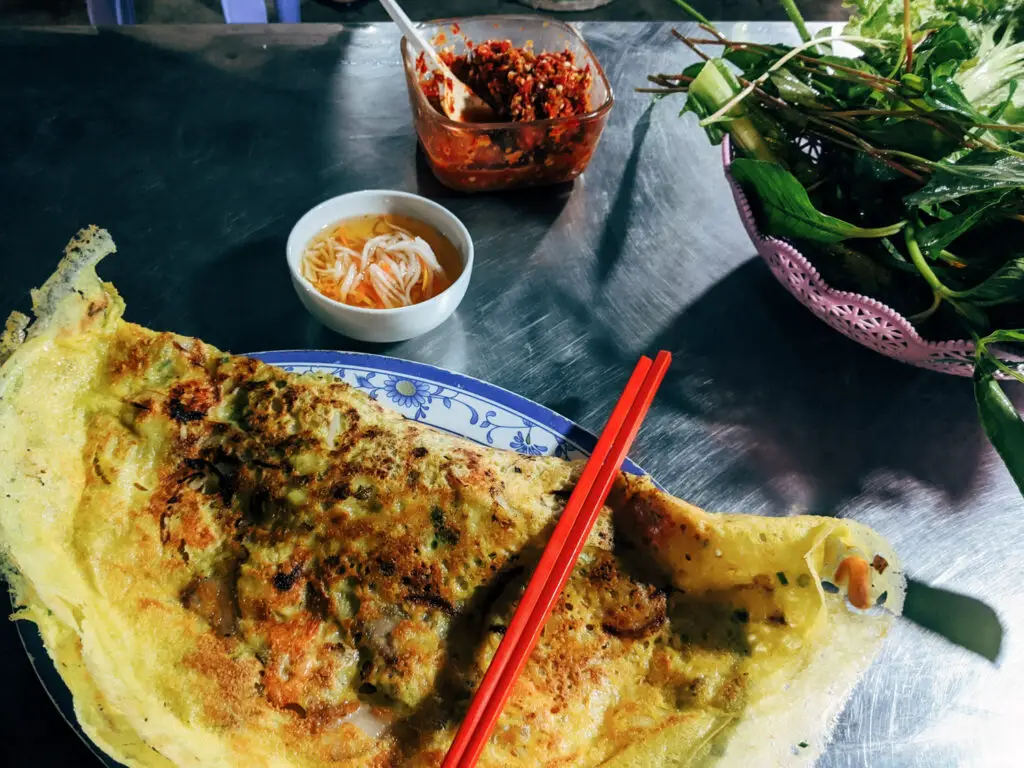
Banh xeo is a Vietnamese dish that consists of a savory pancake filled with pork, shrimp, and bean sprouts. The name of the dish comes from the sound that the pancake makes as it cooks in the pan.
To make banh xeo, a batter is made from rice flour, water, and turmeric powder. The batter is then fried in a hot pan until it forms a thin and crispy pancake. Once the pancake is cooked, it is filled with pork, shrimp, and bean sprouts. The pancake is then rolled up and served with a dipping sauce and fresh herbs.
Nem Ran/Cha Gio Fried Spring Rolls
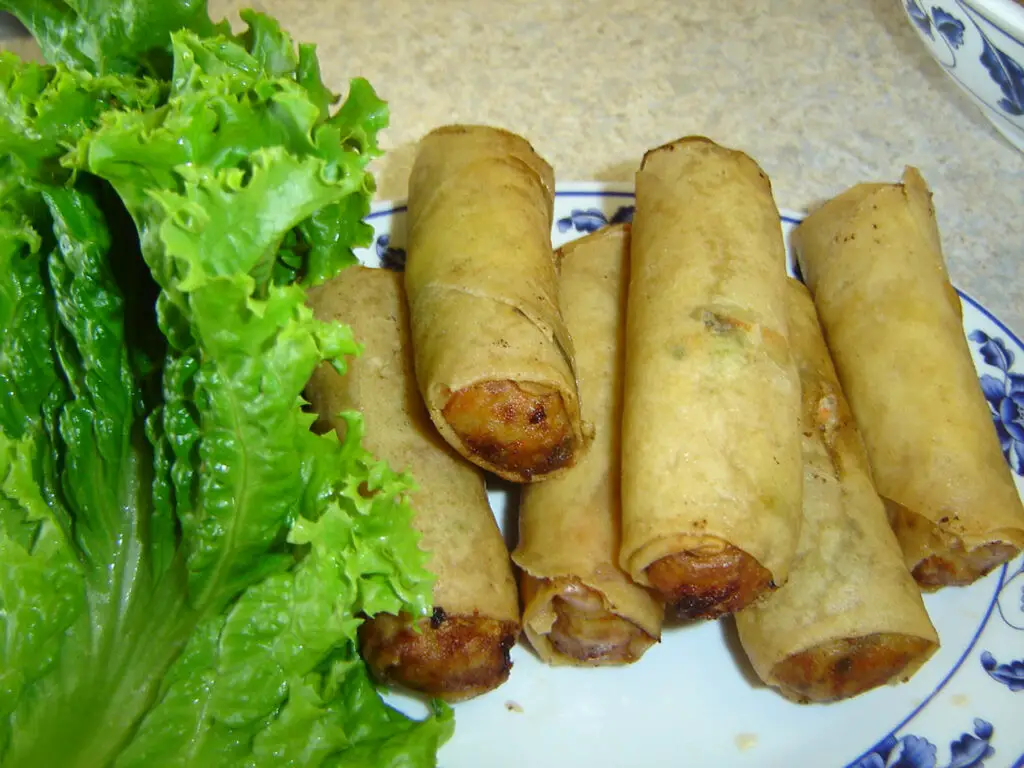
Nem ran, also known as cha gio fried spring rolls, is a popular dish in Vietnam. The spring rolls are made with pork, shrimp, and vegetables, and then fried until crispy. They are often served with a dipping sauce, such as nuoc cham or sweet chili sauce.
Bun Bo Hue
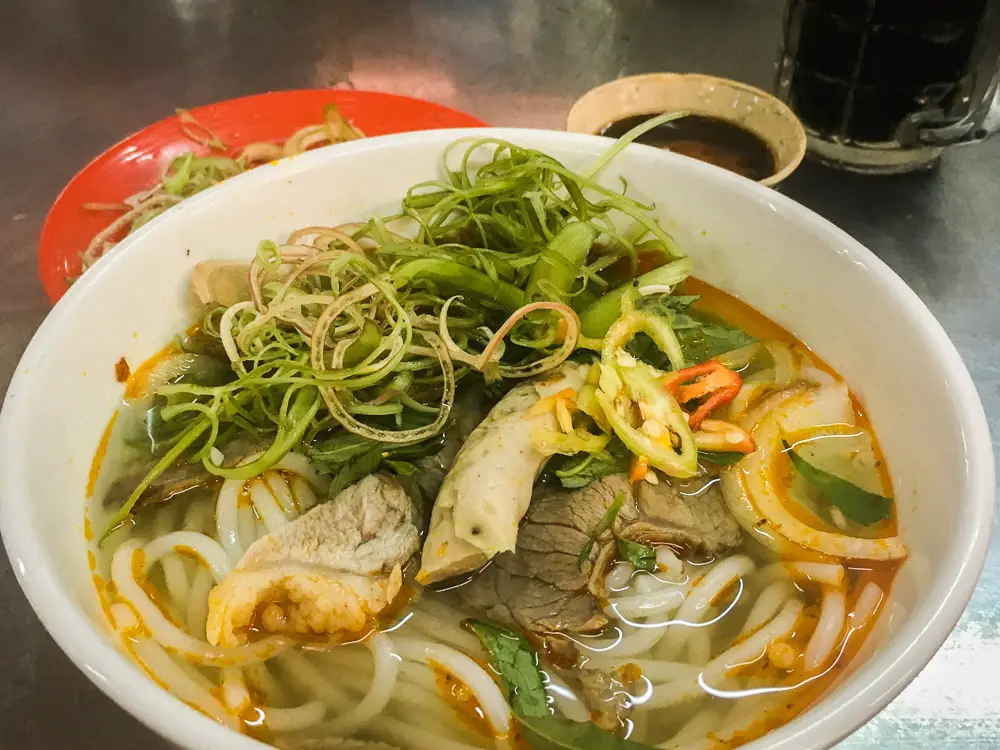
Bun Bo Hue is a type of Vietnamese noodle soup that originates from the city of Hue in central Vietnam. The dish is typically made with rice vermicelli noodles, and meat such as beef and pork, and it is flavored with a variety of spices and herbs.
Bun Bo Hue is gaining in popularity outside of Vietnam, and it can now be found at many Asian restaurants around the world.
Bo La Lot
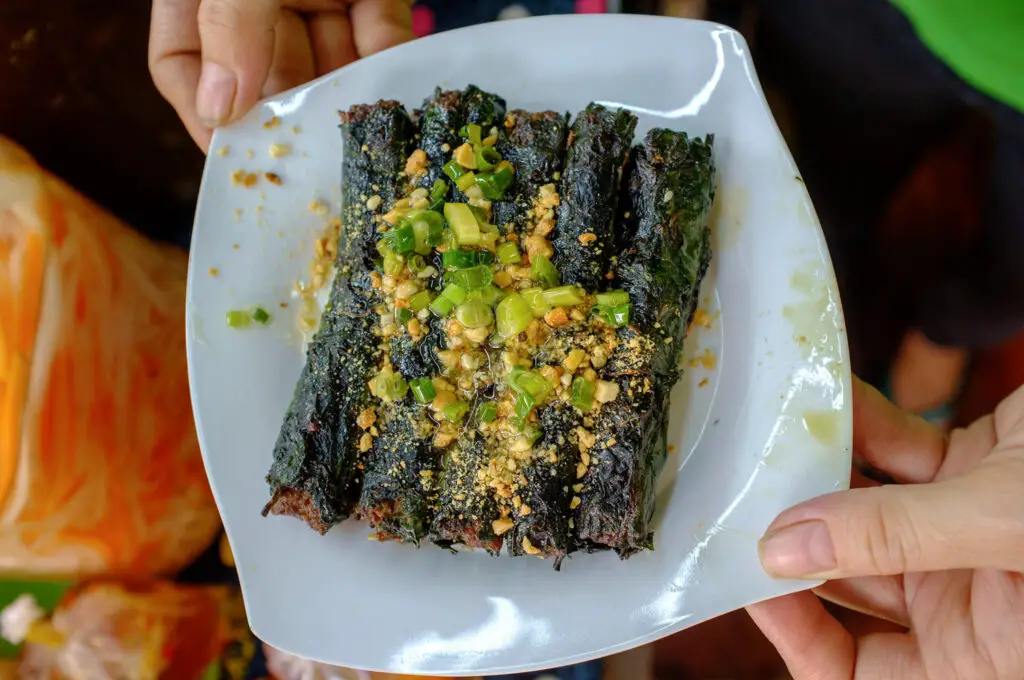
Bo la lot is a Vietnamese dish made from grilled beef wrapped in betel leaves. The beef is marinated in a mixture of fish sauce, garlic, sugar, and chili peppers before being grilled.
The dish is often served with rice or vermicelli noodles, and it can be garnished with peanuts, cilantro, and mint.
Bun Rieu
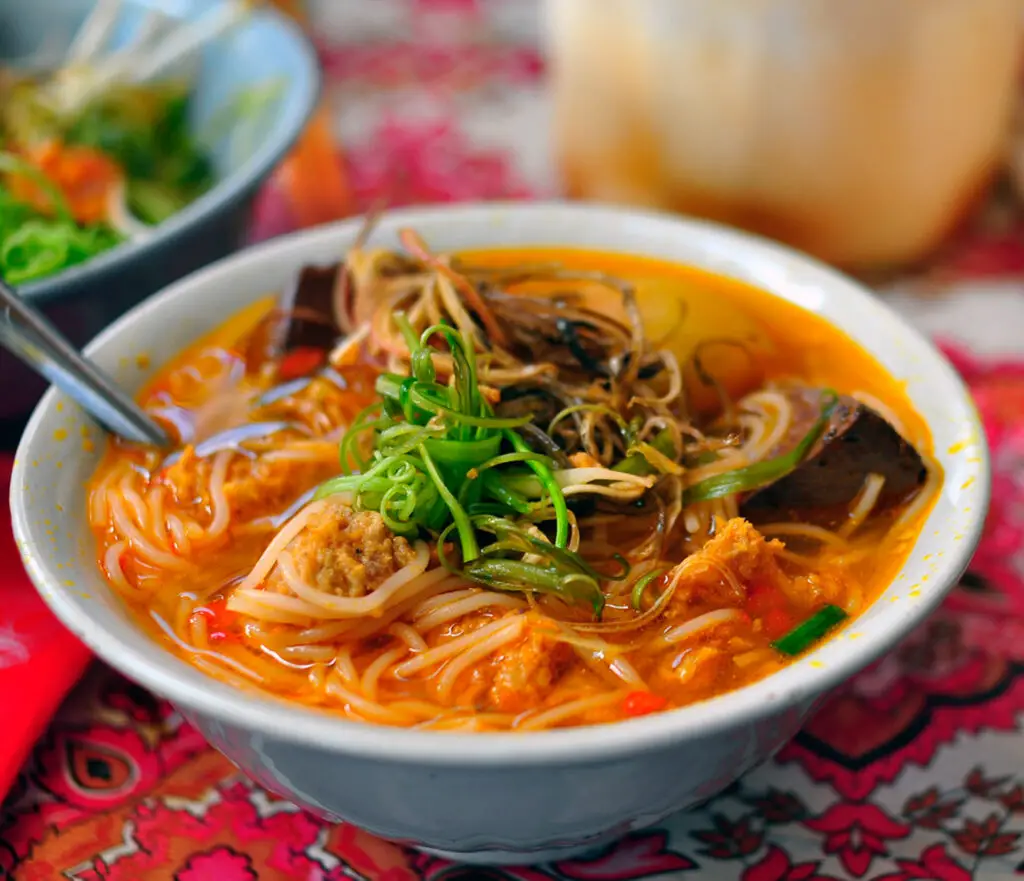
Bun Rieu is a Vietnamese noodle soup that is hearty and filling. The soup is made with a Crab and tomato broth, is usually served with rice noodles, pork, and shrimp, and is one of my favourite flavors of Vietnam.
Bun Rieu is a popular dish in Vietnam, and it is often eaten for breakfast or lunch. The soup is refreshing and flavorful, and it is a great way to start the day.
Chao
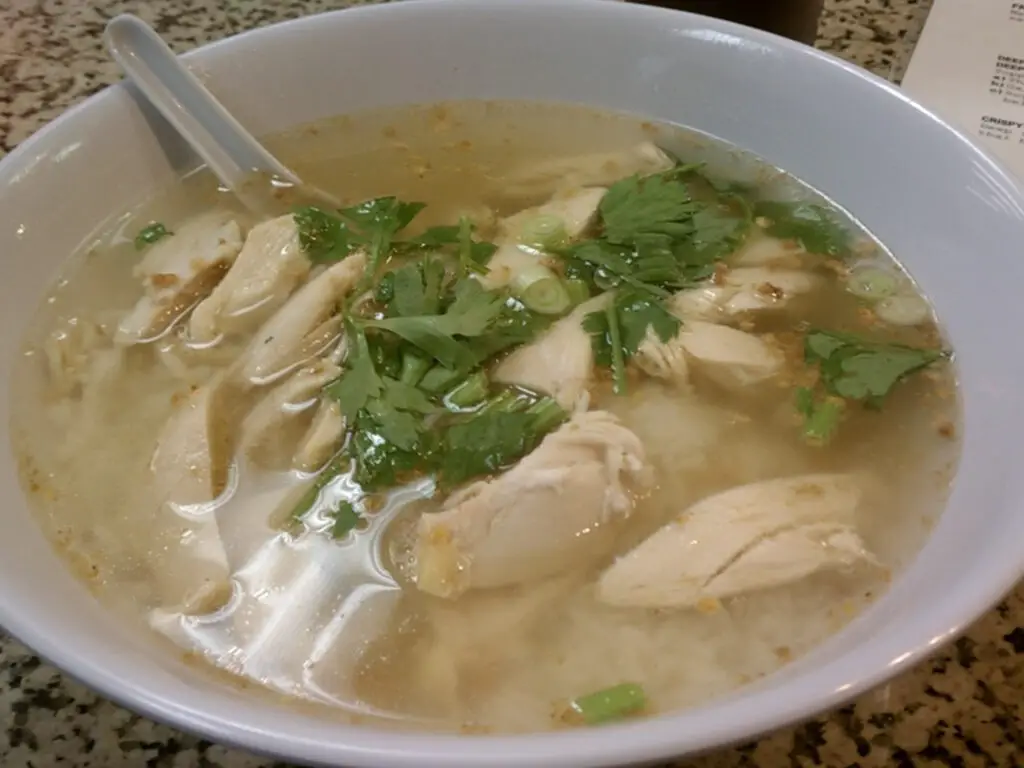
Chao, or rice porridge, is made by cooking rice in broth until it is soft and crumbling. The dish is often served with meats, vegetables, and pickled items. Chao rice porridge is a filling and hearty dish that can be enjoyed at any time of day.
The rice is cooked in a variety of ways, depending on the region, but the most common methods are to boil it or to cook it in a pressure cooker.
The dish often comes with soy sauce, scallions, and ginger, and it can be garnished with peanuts, cilantro, fried shallots, or sesame oil.
Desserts
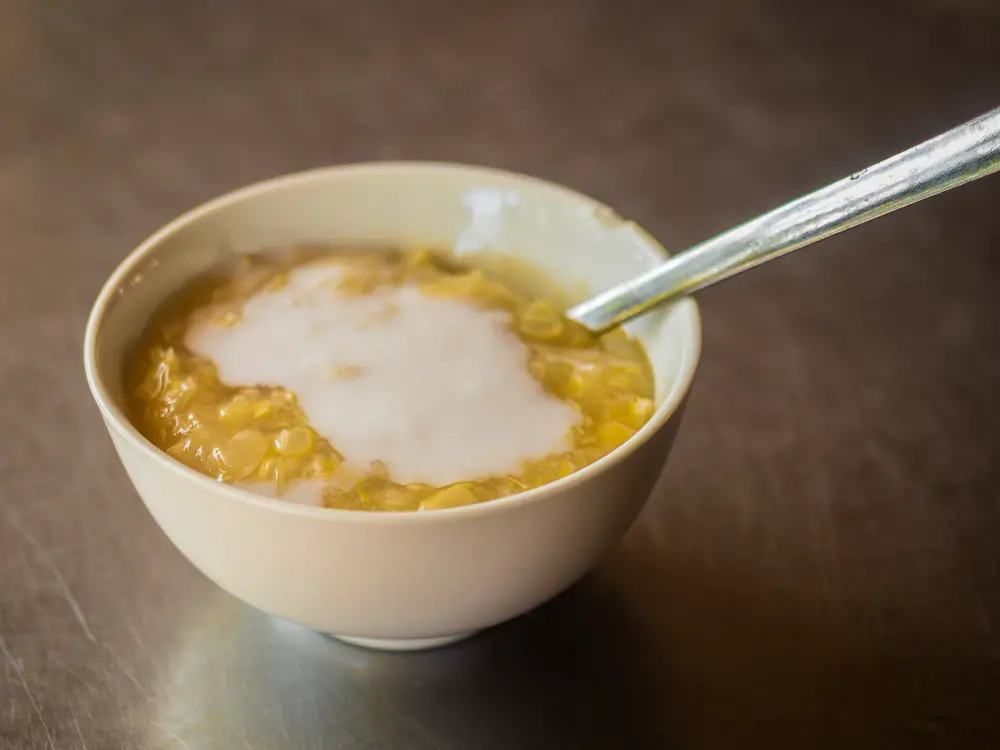
Some of the more well-known Vietnamese desserts include chè ba mau, or Vietnamese three-color dessert, che bap, a sweet dish made with corn and topped with a coconut sauce, bánh flan, an egg custard served with caramel sauce ban, and bánh da lợn, a layered cake made with tapioca flour and mung bean paste. While these desserts may be unfamiliar to some, they are sure to delight anyone with a sweet tooth.
Conclusion to The Flavors of Vietnam: Traditional Vietnamese Food
I hope you enjoyed our trip through the unique flavors of Vietnam, and a look at some of the traditional Vietnamese foods.

